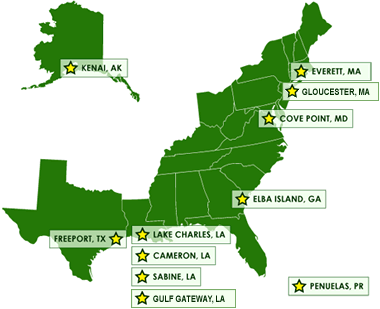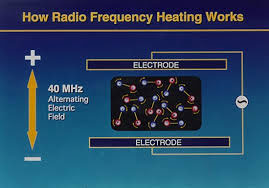University of TT CO2 Conference May 11th > upcoming
UTT Featuring 11 campuses throughout the twin islands
Enhancing Oil and Gas Production Symposium - The Energy Chamber
Opening Remarks Professor A. Jupiter. Distinguished fellow of Petroleum
Professor K. Julien. Board of Governers.UTT
How can we increase value of methanol?
What total value does LNG bring to the country replacing methanol and electricity?
Where is the future of LNG when the main customer USA is now exporting instead of importing?
What is government and industry doing for enhancing oil production?
TT is second largest exporter of MTL worldwide.
Gas curtailment issues 50% gas production converts to LNG for sale.
Dragon Resources is immediate. The focus moves from gas to oil.
Countries local and international see the potential of Petrotrin.
Collaboration ongoing within the Industry and Government for research on the following topics geosciencegas hydrates
effect of facture damage
coastal erosion research
sequence biostratigraphy
radio frequency heating
marginal field taxes
Local papers to recognize 1. three phase comparison of CO2EOR 2. Technical economic evaluation for heavy oil in TT Carbon management
Opportunities to increase oil production in Trinidad . Mr. W. Lalla. UTT
- Developed acrage older than 50 year producing wells
- Undeveloped midmiocene age sandstone
- and unconventional shaleplay and south marine area
A new kind of enhanced oil recovery for Trinidad and Tobago - Mr. Eric Delamaide, feature presenter EOR Alliance
to improve fields SPE 180853, SPE 35385, SPE 165234, 180739, 181499, 183352, 181160, 13609, 183403 (new economical process to monetize high CO2 natural gas)
existing steam gas injection should be improved
methods not tested foam and polymer
If it cannot be steam or water flooded it can be polymer flooded
Challenge fight decline by bringing new gas fields. Dr. T. Driver. C.E.O. Energy Chamber TT
rystad energy
Fiscal framework and profit based taxes
Four (4) opportunities external addition to production
Volume gas from Venezuela
Infrastructute led exploration
Marginal discoveries
Import gas
Infrastructure
Deep water exploration
Engage NGC to recieve more gas from upstream sector
Transparent as prices for NGC
Upstream opportunities reduce costs
Government long term neighbor countries strategies
Dr. K. Persad. Geologist
Five steps needed for increasing oil recovery in mature fields onshore and offshore Trinidad especialy CO2 as the Major IOR Mechanim
Producion 75% oil in ground
CO2 used to enhance oil recovery in oil reservoir
Effective at all types of oil
Volume
Ammonia plants manufacture C02 330MMcfd
Flue gas CO2 and Nitrogen > 2 Bcfd
Up to 3 billion barrels through C02.E0R . Sequestration up to one trillion cubic feet . C02E0R produces cleaner oil
C02 was used in Trinidad by Texaco
Five CO2EOR pilots 1970 - 1990 all successful
1.Availability of large fields
2. C02 at price and pressure to field gate
3.Expertise in C02 and C02 EOR
4.Agencies on board government, MEEI, NGO, EPA, Bureau of standards
IOR available for Soldado marine, pointfortin, guapo, forest reserve, parrylands, oil field areas
Co2 can be transported via pipeline network. Dr. L. Sobers. UWI.
compressor at pointlisas
Liquefied carbon dioxide can be moved by tank truck or barges offshore
to gate of field
C02 enhanced oil recovery roadmap
Aim Broad objectives local content
18-20months. pilot project. CO2 pipeline, >>>>>>>>>>>>5-7yrs expand pilot
C02 injec 100-200mmcfd for increase in oil production
Prefeasibility study ongoing
Framework and stakeholders MEEI, Petrotrin, NGC, UWI, UTT
Challenge return on investments
Failures contrinuted to complex reservoir and mechanical problems
Asses risk of C02 breakthrough to surface
Dr. Soroush. UTT.www.u.tt.
Research and models to determine connectivity heterogenity evolution
Wells showing connectivity important factors water rate and fluid type considerations
Non-connectivity comparible with kh senario
fault considerations for large models high heterogeneity
Panel Questions:
1. After C02 IOR campaign how is gas separated?
2. How knowledge solution showing results?
3. How can a refinery be affected based on C02 CCS / IOR + WTE performance?
4. How much to invest in a CCS IOR program based on rate of return confident models?
5. How is the research accommodating for new CO2/IOR studies?
6. Fiscal changes for development
7. Service sector time frame for C02/IOR barges
8. Provisions for new C02 to refinery
UTT Featuring 11 campuses throughout the twin islands
Enhancing Oil and Gas Production Symposium - The Energy Chamber
Opening Remarks Professor A. Jupiter. Distinguished fellow of Petroleum
Professor K. Julien. Board of Governers.UTT
How can we increase value of methanol?
What total value does LNG bring to the country replacing methanol and electricity?
Where is the future of LNG when the main customer USA is now exporting instead of importing?
What is government and industry doing for enhancing oil production?
TT is second largest exporter of MTL worldwide.
Gas curtailment issues 50% gas production converts to LNG for sale.
Dragon Resources is immediate. The focus moves from gas to oil.
Countries local and international see the potential of Petrotrin.
Collaboration ongoing within the Industry and Government for research on the following topics geosciencegas hydrates
effect of facture damage
coastal erosion research
sequence biostratigraphy
radio frequency heating
marginal field taxes
Local papers to recognize 1. three phase comparison of CO2EOR 2. Technical economic evaluation for heavy oil in TT Carbon management
Opportunities to increase oil production in Trinidad . Mr. W. Lalla. UTT
- Developed acrage older than 50 year producing wells
- Undeveloped midmiocene age sandstone
- and unconventional shaleplay and south marine area
A new kind of enhanced oil recovery for Trinidad and Tobago - Mr. Eric Delamaide, feature presenter EOR Alliance
to improve fields SPE 180853, SPE 35385, SPE 165234, 180739, 181499, 183352, 181160, 13609, 183403 (new economical process to monetize high CO2 natural gas)
existing steam gas injection should be improved
methods not tested foam and polymer
If it cannot be steam or water flooded it can be polymer flooded
Challenge fight decline by bringing new gas fields. Dr. T. Driver. C.E.O. Energy Chamber TT
rystad energy
Fiscal framework and profit based taxes
Four (4) opportunities external addition to production
Volume gas from Venezuela
Infrastructute led exploration
Marginal discoveries
Import gas
Infrastructure
Deep water exploration
Engage NGC to recieve more gas from upstream sector
Transparent as prices for NGC
Upstream opportunities reduce costs
Government long term neighbor countries strategies
Dr. K. Persad. Geologist
Five steps needed for increasing oil recovery in mature fields onshore and offshore Trinidad especialy CO2 as the Major IOR Mechanim
Producion 75% oil in ground
CO2 used to enhance oil recovery in oil reservoir
Effective at all types of oil
Volume
Ammonia plants manufacture C02 330MMcfd
Flue gas CO2 and Nitrogen > 2 Bcfd
Up to 3 billion barrels through C02.E0R . Sequestration up to one trillion cubic feet . C02E0R produces cleaner oil
C02 was used in Trinidad by Texaco
Five CO2EOR pilots 1970 - 1990 all successful
1.Availability of large fields
2. C02 at price and pressure to field gate
3.Expertise in C02 and C02 EOR
4.Agencies on board government, MEEI, NGO, EPA, Bureau of standards
IOR available for Soldado marine, pointfortin, guapo, forest reserve, parrylands, oil field areas
Co2 can be transported via pipeline network. Dr. L. Sobers. UWI.
compressor at pointlisas
Liquefied carbon dioxide can be moved by tank truck or barges offshore
to gate of field
C02 enhanced oil recovery roadmap
Aim Broad objectives local content
18-20months. pilot project. CO2 pipeline, >>>>>>>>>>>>5-7yrs expand pilot
C02 injec 100-200mmcfd for increase in oil production
Prefeasibility study ongoing
Framework and stakeholders MEEI, Petrotrin, NGC, UWI, UTT
Challenge return on investments
Failures contrinuted to complex reservoir and mechanical problems
Asses risk of C02 breakthrough to surface
Dr. Soroush. UTT.www.u.tt.
Research and models to determine connectivity heterogenity evolution
Wells showing connectivity important factors water rate and fluid type considerations
Non-connectivity comparible with kh senario
fault considerations for large models high heterogeneity
Panel Questions:
1. After C02 IOR campaign how is gas separated?
2. How knowledge solution showing results?
3. How can a refinery be affected based on C02 CCS / IOR + WTE performance?
4. How much to invest in a CCS IOR program based on rate of return confident models?
5. How is the research accommodating for new CO2/IOR studies?
6. Fiscal changes for development
7. Service sector time frame for C02/IOR barges
8. Provisions for new C02 to refinery




















